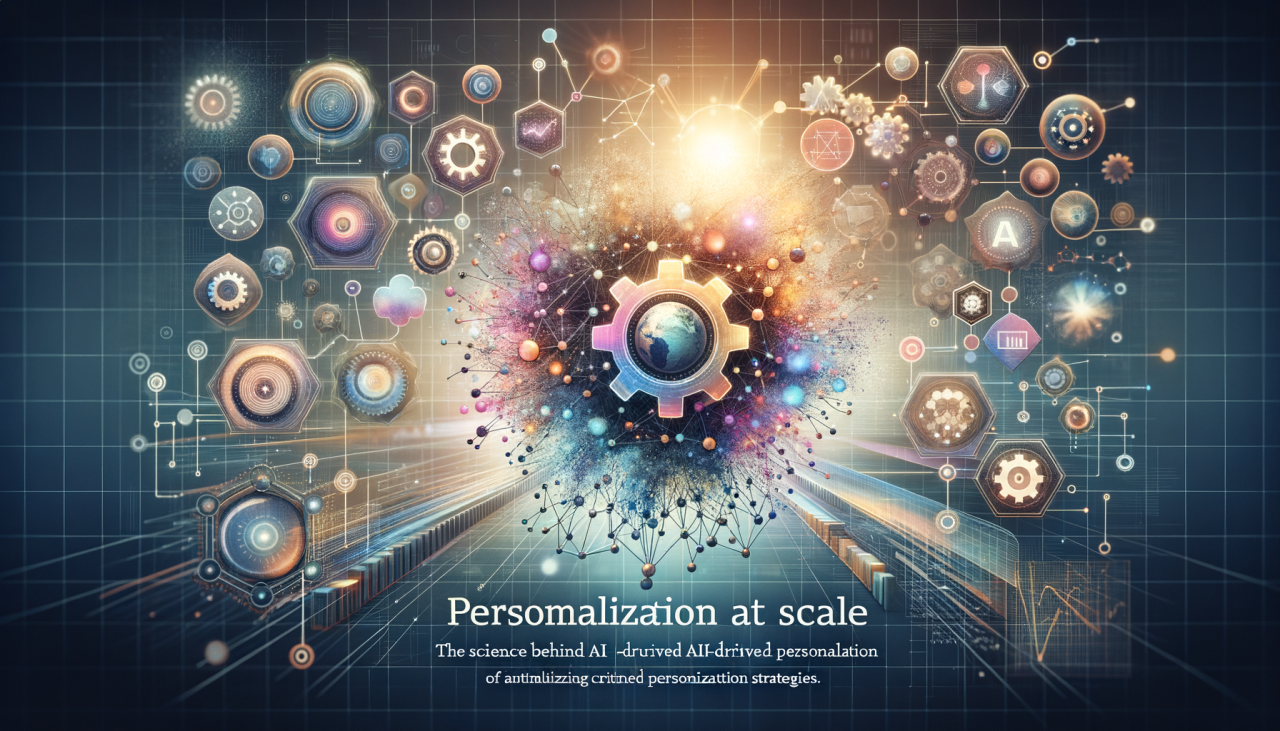TL;DR:
- AI-driven personalization leverages data to deliver custom recommendations and experiences at scale.
- Key algorithms like collaborative filtering and natural language processing (NLP) power modern personalization strategies.
- Personalization enhances customer engagement, loyalty, and conversion rates when implemented correctly.
- Scalability hinges on real-time data processing and integration with existing systems.
- Organizations must balance personalization with ethical considerations to maintain user trust.
What is AI-Driven Personalization?
AI-driven personalization refers to the use of artificial intelligence algorithms to create customized user experiences at scale. By analyzing data like user behavior, preferences, and historical interactions, AI can deliver recommendations, content, or advertising uniquely suited to an individual.
For example, Netflix suggests movies based on your viewing history, while e-commerce platforms like Amazon personalize product recommendations. AI not only enables precise targeting but also ensures the process is scalable across millions of users.
How Do AI Personalization Algorithms Work?
1. Collaborative Filtering
One of the most commonly used AI techniques is collaborative filtering. It identifies patterns in user behavior and groups individuals with similar preferences. For instance, if User A and User B both like Product X, collaborative filtering assumes they might share interest in Product Y.
This algorithm works well for recommendation systems, such as those used by Spotify or YouTube.
2. Content-Based Filtering
Another technique, content-based filtering, matches recommendations to user profiles based on item attributes. The algorithm analyzes specific features or keywords associated with items liked by the user. For instance, if a user enjoys suspense novels, content-based filtering might suggest books with similar themes or genres.
3. Natural Language Processing (NLP)
NLP plays a critical role in understanding unstructured data such as text or speech. Platforms like chatbots or virtual assistants employ NLP to interpret user queries and deliver contextually relevant responses. Sentiment analysis, a subset of NLP, can even detect emotional tones to fine-tune communication.
4. Deep Learning
Deep learning models, like neural networks, excel at identifying complex patterns in datasets. These algorithms are suitable for dynamic environments, such as personalized advertising or predictive analytics in healthcare, where variables constantly change.
Why is AI Personalization Important?
Today’s consumers expect more than just generic communication. Personalization allows businesses to meet this standard, improving engagement and conversion rates.
- Enhanced Customer Experience: Personalized touchpoints make users feel valued, reducing frustration from irrelevant messaging.
- Stronger Brand Loyalty: When customers see companies addressing their unique needs, their trust in the brand increases.
- Revenue Growth: Companies utilizing AI personalization often see higher basket sizes or purchase frequencies due to targeted upselling or cross-selling.
Challenges of Scaling Personalization
While AI enables personalized experiences, scaling such efforts requires overcoming certain hurdles:
1. Data Privacy Concerns
Consumers are increasingly skeptical about how their data is collected and used. Ensuring transparency and complying with regulations like GDPR or CCPA is critical for preserving trust.
2. Real-Time Data Integration
Deploying personalization strategies at scale demands real-time processing of vast datasets. Integrating AI tools with existing data pipelines and customer relationship management (CRM) systems can be technically challenging.
3. Avoiding Over-Personalization
Ironically, hyper-personalization can alienate users by making interactions feel intrusive. Businesses must strike a balance between being helpful and overstepping boundaries.
Best Practices for Implementing AI Personalization Strategies
To ensure your personalization efforts succeed, it’s critical to follow best practices:
1. Start Small and Scale Gradually
Begin with one touchpoint—be it recommendations, email marketing, or ad targeting. Once successful, expand personalization to other areas.
2. Continuously Improve Algorithms
AI models require regular updates to account for changing user behaviors or market trends. Using feedback loops is essential for refinement.
3. Leverage A/B Testing
Run experiments to compare personalized and non-personalized approaches. Use the insights to optimize your strategies further.
How Visual Tools Enhance Personalization
Incorporating visuals can help users quickly understand personalized recommendations. For example, dynamic infographics showing tailored insights or product visualization based on preferences can deepen engagement.
Suggested Visual: Display a flowchart showcasing how collaborative filtering and content-based filtering work, illustrating data flow from user interactions to personalized outputs.
AI Personalization Across Industries
E-commerce
AI drives custom product suggestions, dynamic pricing, and personalized email marketing. Platforms like Shopify use AI to help merchants optimize customer experiences.
Healthcare
AI provides tailored treatment recommendations or reminders based on patient history and behavior, ensuring improved care outcomes.
Education
EdTech platforms utilize AI to adapt course materials based on a learner’s progress and preferences, creating optimized learning paths.
Ethical Considerations of AI Personalization
While innovation is central to AI-driven personalization, companies must be mindful of ethical implications:
- Data Transparency: Inform users about data usage and provide opt-out options.
- Bias Mitigation: Ensure your algorithms don’t perpetuate unfair stereotypes or exclude groups inadvertently.
- Respect User Boundaries: Avoid exploiting sensitive information for short-term gains.
Conclusion: The Future of AI-Driven Personalization
AI has transformed how businesses engage with users, offering precision and scalability never seen before. By harnessing algorithms like collaborative filtering, NLP, and deep learning, companies can craft experiences that resonate deeply with their audience. However, the key to success lies in aligning innovation with responsibility. Properly implemented, AI personalization will continue to reshape industries, delivering not just customer satisfaction but sustained growth as well.
Ready to explore how AI personalization can elevate your business? Contact us to learn more about implementing cutting-edge strategies.



